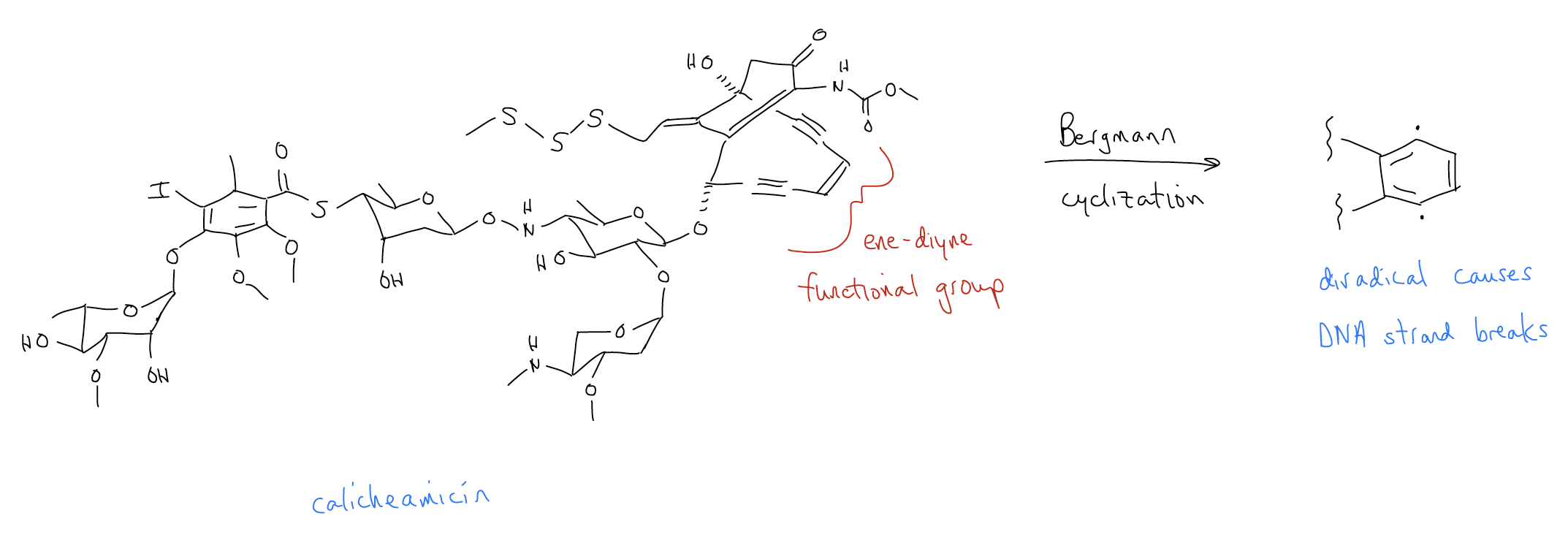11.1: Synthesis of Alkynes
- Page ID
- 321642
Alkynes are hydrocarbons that contain a C-C triple bond. We name them similarly to alkanes, but use the suffix –yne. As with alkenes, we indicate the position of the triple bond with a number. For example, 2-butyne would be different than 1-butyne. All other rules of IUPAC nomenclature apply to alkynes.

In a C-C triple bond, each of the carbon atoms is sp-hybridized, making the geometry of alkynes linear. Two sp-hybridized orbitals make \(σ\) bonds, while the two orthogonal atomic p orbitals make two \(π\) bonds that are also orthogonal to one another. These \(π\) bonds are equal in energy in alkynes. The HOMO is one of the \(π_{C-C}\) bonds, while the LUMO is one of the corresponding \(π^{*}_{C-C}\) bonds. Because of the requirement for a linear geometry, the number of cycloalkynes is limited to cyclootyne and larger due to angle/ring strain. The C-C triple bond is also shorter (120 pm) than the C=C double bond (134 pm), and thus also much stronger. The same rules for s-donation also apply – greater s-donation yields higher stability and greater nucleophilicity.
Synthesis of alkynes
One of the easiest ways to make alkynes takes advantage of the acidity of the \(σ_{C-H}\) bond of terminal alkynes. Since the terminal carbon is sp-hybridized, it has 50% s character. Atoms with greater s character hold their electrons closer to the nucleus and are said to be more electronegative. This helps explain why alkynes are so much more acidic than either alkenes or alkanes.

Since we can deprotonate alkynes, they can become nucleophilic. One good way to make substituted alkynes is to perform SN2 reactions on acetylide anions. If acetylene were alkylated once, the product would be a terminal alkyne. Another alkylation would yield an internal alkyne.

Another good way of making alkynes is via elimination (E2 only). Consider the following reaction. A stronger base like NaNH2 is needed for this reaction, which is concerted (no carbocation forms because it is not stable). Proper orbital alignment is a requirement - \(σ_{C-H}\) and \(σ^{*}_{C-Br}\) must be overlapping. In this case, the newly formed \(π_{C-C}\) orbital is perpendicular to the existing one.

Additionally, if we take a dihaloalkane and treat it with two equivalents of base, the first elimination will give a vinyl halide that can then undergo dehydrohalogenation again to yield the alkyne.

Biomedical Spotlight
Calicheamicin is a natural product isolated from the Micromonospora echinospora bacterium. It is part of a potent class of natural products known as the enediyne antitumor antibiotics due to the presence of these functional groups in their structure. These molecules readily react with DNA. Calicheamicin can bind to the minor groove of DNA, where it becomes activated and then undergoes a Bergman cyclization to give a diradical benzene intermediate. This diradical then reacts with the deoxyribose backbone of DNA, ultimately causing double strand cleavage. While this reactivity makes it a useful molecule to treat cancer, this reaction is unspecific, so it happens in both cancerous and healthy cells. Fortunately, targeted immunotherapies have been developed that direct calicheamicin to solid tumors.


